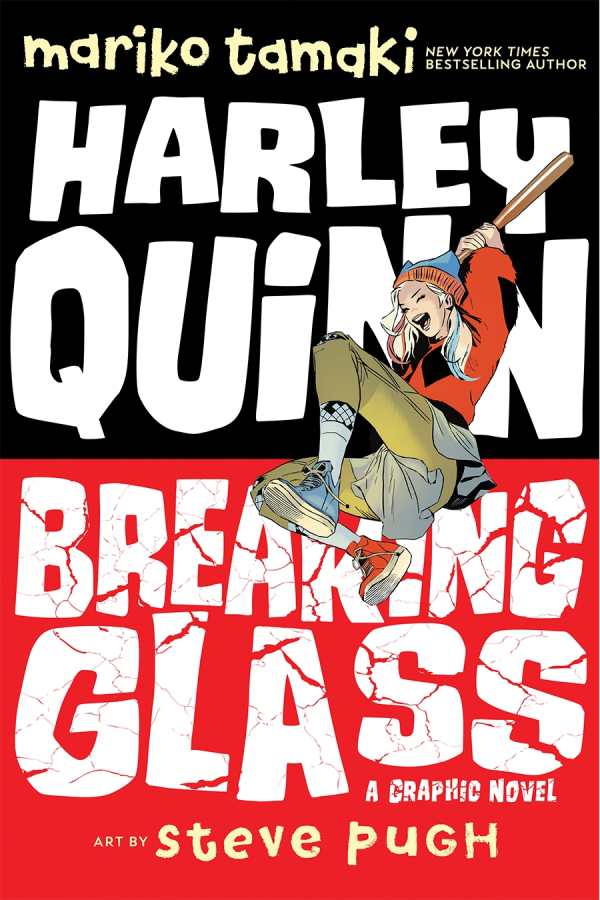Harley Quinn
Breaking Glass
A new origin story for the unpredictable antihero Harley Quinn is revealed in Mariko Tamaki’s Harley Quinn: Breaking Glass. It portrays her as a quirky teenager sent to live in Gotham City, where she’s “adopted” by a kind but unusual group of drag queens. She also befriends Ivy, a classmate and a budding environmental activist.
Breaking Glass elevates Harley Quinn to solo star status, but it also preserves her strange relationship with The Joker, who gets a revised origin story of his own and a new look, too. Other longtime associations are also here. There are hints that Ivy is on her way to becoming Poison Ivy, the classic Batman villain, and Bruce Wayne makes an appearance. But the focus is Harley Quinn, and as Tamaki writes her, she’s a fascinating character who’s still discovering herself and questioning traditional notions of justice.
Steve Pugh’s art is stunning throughout, its style realistic but tweaked to comic exaggeration when needed. Its colors are as impressive, using a full range of hues in a sparing way for maximum impact. The main blue-green and white tone is punctuated with bursts of red and black (Harley Quinn’s costume), purple and green (The Joker’s costume and hair), pink (in the drag club), and orange (prison jumpsuits).
Breaking Glass is a standout achievement that demonstrates the unique blend of words, pictures, and color that comics offer. With its diverse cast and respect for the essential natures of long-beloved characters, Harley Quinn: Breaking Glass should appeal to comic book newcomers as well as longtime fans.
Reviewed by
Peter Dabbene
Disclosure: This article is not an endorsement, but a review. The publisher of this book provided free copies of the book to have their book reviewed by a professional reviewer. No fee was paid by the publisher for this review. Foreword Reviews only recommends books that we love. Foreword Magazine, Inc. is disclosing this in accordance with the Federal Trade Commission’s 16 CFR, Part 255.

